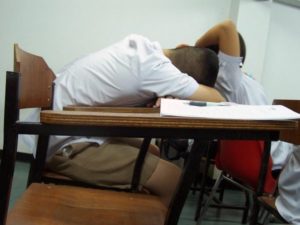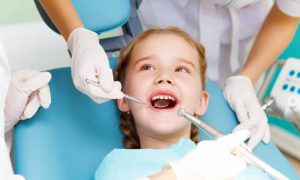Sleep Apnea and ADHD are being increasingly diagnosed in U.S. children. You might think that’s all they have in common, but recent research suggests they may be inextricably linked! And both of these disorders can sometimes be solved through orthodontic work.
What is Sleep Apnea?
Sleep apnea is a disorder characterized by a sufferer experiencing multiple breaks in breathing or excessively shallow breaths while sleeping. It is chronic and can happen many times per hour, sometimes prompting your body to react as though you are choking. The result is poor quality sleep that can affect your whole day!
What Causes Sleep Apnea in Children?
One of the main causes of sleep apnea, especially in adults, is obesity. The extra weight bearing down on the air passages causes serious breathing issues.
A big contributor to sleep apnea in children is a narrow palate. Narrow upper and lower jaws can cause a child to breathe with their mouth open. It also guides their tongue to sit low, which blocks the airway.
Symptoms of Sleep Apnea
The symptoms of sleep apnea may surprise you. They can seem like every-day complaints and issues. Add them all up, though, and you have one uncomfortable kid!
-
breathing through the mouth
-
stuffed-up nose
-
chronic allergies
-
sinus infections
-
asthma
-
snoring, stuffy nose
-
fatigue
-
frequently sick
Expanding the Palate for Quality Sleep
As an orthodontist, I regularly see children who need a palate expansion. We widen their palate so the upper jaw expands, which in turn expands the nasal passages. It also gives the tongue more room to function so it rests on the roof of the mouth, rather than the bottom.
This allows them to breathe better, sleep better, have less colds, and stop snoring!
The Process
Best of all, the process is usually totally pain-free.
The earlier we start the expansion process, the better. We often see children at the age of 6 or 7. If you wait until they hit puberty, the expansion will be more difficult because the jaw is starting to solidify. Adults that need their palate expanded have to undergo surgery to correct it. So, it’s definitely better to do it as a child when it is painless and simple!
Ideally, you will want it done by the age of 10.
The palate expander that we use is a Haas appliance. After 30 years in the business, we absolutely trust Haas. It does the best job, it is most predictable, and it is the most comfortable for our patients!
The expander functions in the mouth for 1-3 months. We teach the parent how to activate the expander, which is done with a key that you turn in the appliance. With every turn, it is widened by ¼ of a millimeter. That’s why there is so little pain!
During this time, we will check in every 4-5 weeks to make sure that progress is going how we expect it to be. We have worked on more than 10,000 kids so we are pretty good at estimating the results!
How is Sleep Apnea Related to ADHD?
There are studies that suggest that 25% of children that are diagnosed with ADHD might actually have sleep apnea. In those cases, the sleep apnea is affecting their sleep and therefore their behavior and ability to learn.
Wouldn’t it be great to fix your child’s attention difficulty with an orthodontic treatment rather than a lifetime of unnecessary medication?
Come in for a consultation.
If your child has any of these symptoms, or even if they don’t, bring them in so that we can examine their palate. Potentially preventing serious future problems, surgeries, medications, and expenses is definitely worth your time.
It will make such a huge difference in your child’s life!
For a beautiful smile!
Dr. Galante
From the office of Drs. Cater and Galante







